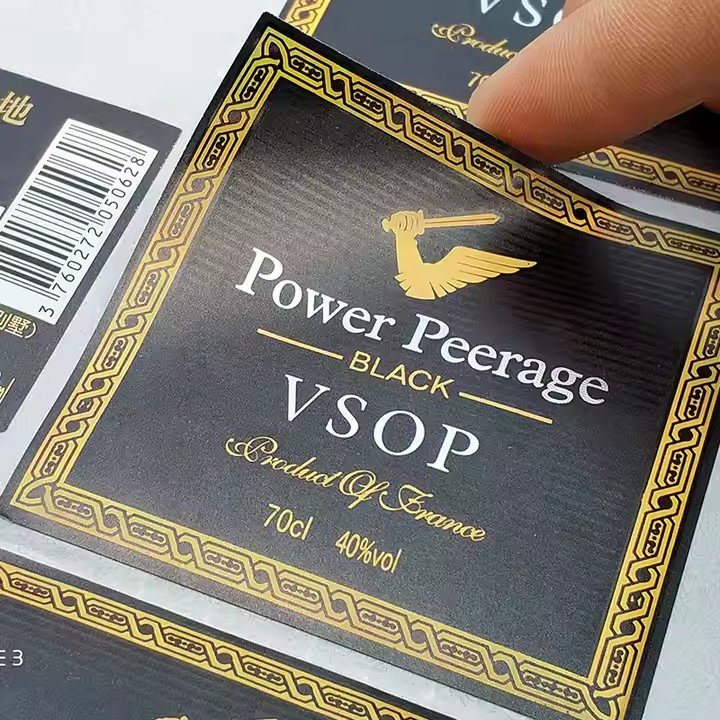- Iconic Natural Landscapes: Abstract Presentation Over Literal Depiction
Australia’s unique landforms and ecology are irreplaceable visual signatures. In design, landscapes should be stylized and abstracted, not rendered in full realism (which can look cheap). The goal is to express a sense of grandeur and purity.
Symbolizing Wine Regions:
For different wine regions such as Barossa Valley, Hunter Valley, and Margaret River, extract and simplify iconic elements.
Barossa Valley: known for its century-old vineyards — the vine branches can be abstracted into flowing lines with warm yellow gradients (mimicking sunlight over valleys) on a light brown background (echoing soil tones). This highlights the terroir while maintaining elegance.
Margaret River: known for coastal vineyards — use wave-like lines (sea) and curved slopes (vineyards) around the label’s border. Light blue and soft green hues convey a fresh coastal terroir.
Integrating Natural Light:
Ample Australian sunlight contributes to wine quality. Incorporate visuals of “sunlight refraction” or “morning mist” to express this.
For red wines, use golden lines symbolizing sunlight filtering through grape leaves against a deep purple background, emphasizing richness and terroir depth.
For white wines, combine pale gold light spots with a soft teal background to convey freshness and brightness.

Design Tips:
Avoid high-saturation colors (bright red, yellow). Australians prefer low-saturation “Morandi” palettes—soft browns, off-whites, muted purples. Use only 1–2 key landscape elements to prevent visual clutter.
- Native Flora Elements: Emphasize “Natural Authenticity,” Not Polished Perfection
Australia’s native flora (eucalyptus, golden wattle, kangaroo paw flower) offers strong local identity and organic beauty. The design tone should feel wild and effortless, not overly refined.
Expressing “Wild Vines”:
Unlike Europe’s symmetrical vineyard vines, Australian vines can appear naturally sprawling.
Draw irregular vine lines of varying thickness, jagged-edged leaves, and grape clusters of uneven sizes to reflect natural growth and freedom.
For Shiraz labels, use deep brown vine lines with purple grape accents on a cream background — a balance of character and casual charm.
Accent Use of Native Plants:
Eucalyptus leaves or golden wattle blossoms can be secondary design elements.
A few eucalyptus leaves in the corner (with slightly curled edges) or a golden wattle outline near the logo (in fine gold lines) subtly reinforce the Australian identity.
Use light gray or off-white backgrounds to enhance the detail’s subtlety and sophistication.
- Local Cultural Integration: From “Symbols” to “Emotion”
Australia is multicultural, yet deeply proud of its local heritage and laid-back lifestyle. Wine labels can connect emotionally by embedding references to Indigenous culture, pastoral heritage, or coastal living, presenting wine as a reflection of the Australian way of life.
(1) Indigenous Culture: Subtle Tribute, Not Appropriation
Indigenous art is central to Australian identity, but must be used respectfully — inspired by, not imitated from.
Simplified Totemic Motifs:
Extract elements like dot painting, wave lines, or concentric circles and modernize them.
For example, create a grape cluster formed from brown dots of varying sizes, encircled by wave patterns representing rivers and land.
Use earth tones—ochre, dark brown, clay beige—to reflect the Indigenous palette, evoking “connection between land and wine.”
Avoid using sacred or religious symbols (e.g., Dreamtime icons) to prevent cultural offense.
Color Palette Resonance:
Indigenous art often favors earthy yellows, rusts, deep browns, forest greens, and sky blues.
A Cabernet Sauvignon label could adopt ochre as the base, dark green vine outlines, and a cream backdrop — harmonizing with Indigenous art aesthetics while expressing terroir.
(2) Pastoral and Coastal Living: Conveying “Effortless Freedom”
Australians love the outdoors — the openness of the outback and the ease of the coast define their lifestyle. Label designs can compress these into symbolic scenes that evoke emotional warmth and escapism.

Minimalist Pastoral Scenes:
Draw a sunset pasture with vineyard silhouettes — horizontal lines to show vastness, slanted lines for trellises, and a few eucalyptus trees in the distance (simple, sturdy forms).
Use warm orange (sunset), light brown (earth), and deep green (leaves) to suggest relaxation and natural abundance.
For GSM blends (Grenache–Shiraz–Mourvèdre), this setting metaphorically reflects the blend’s complexity and richness, just like the diverse Australian landscape.


